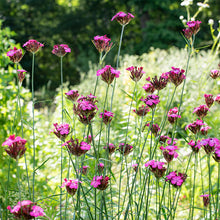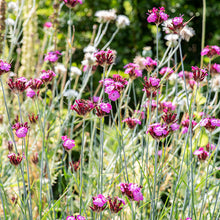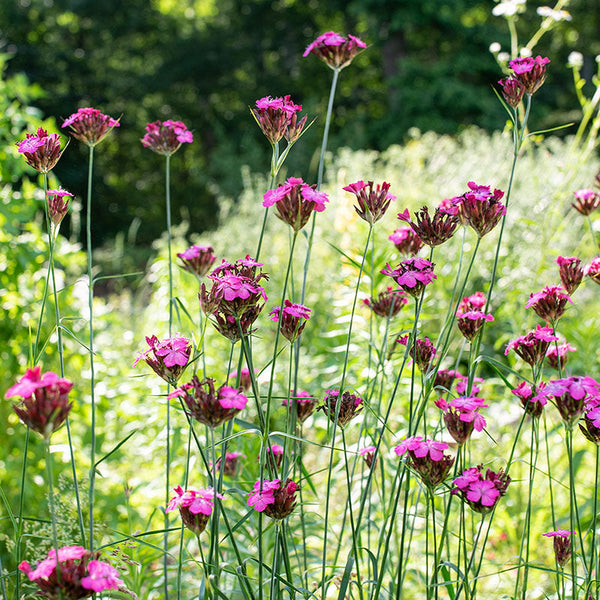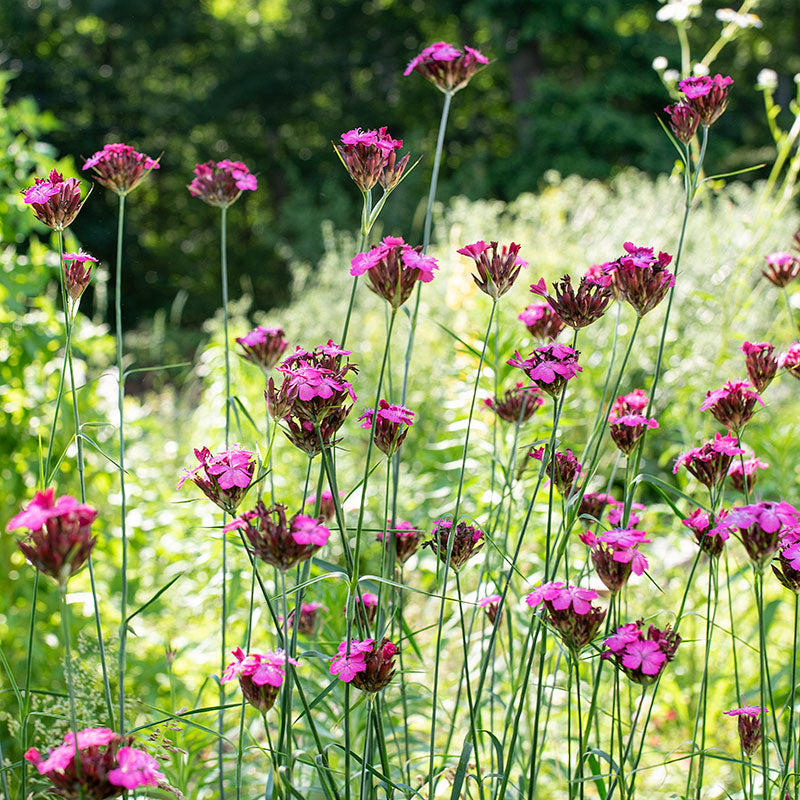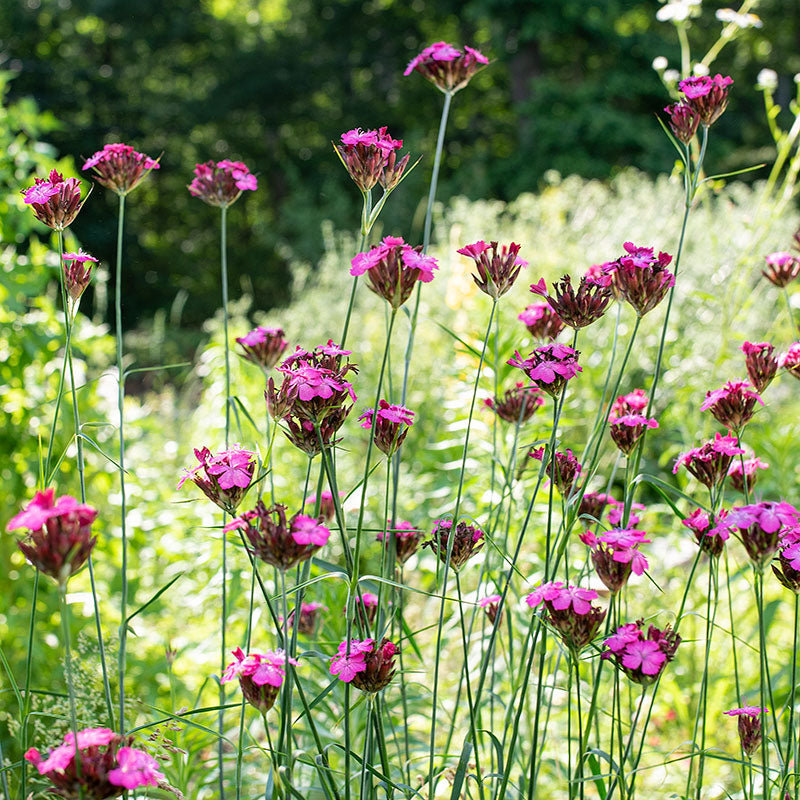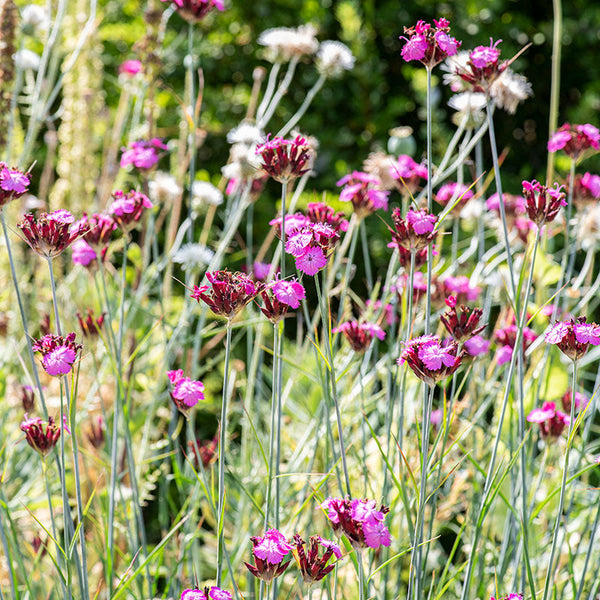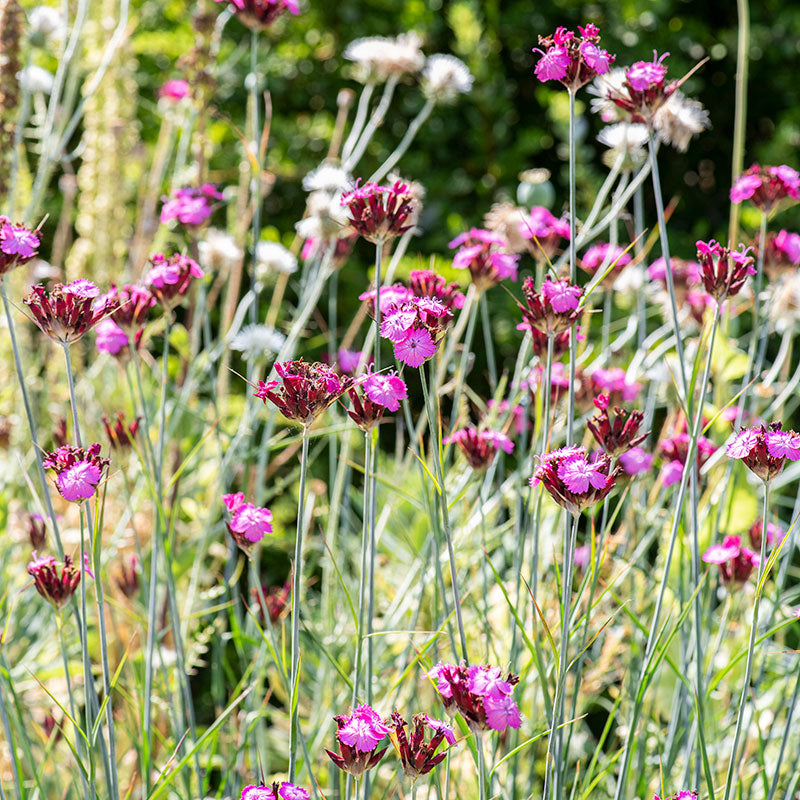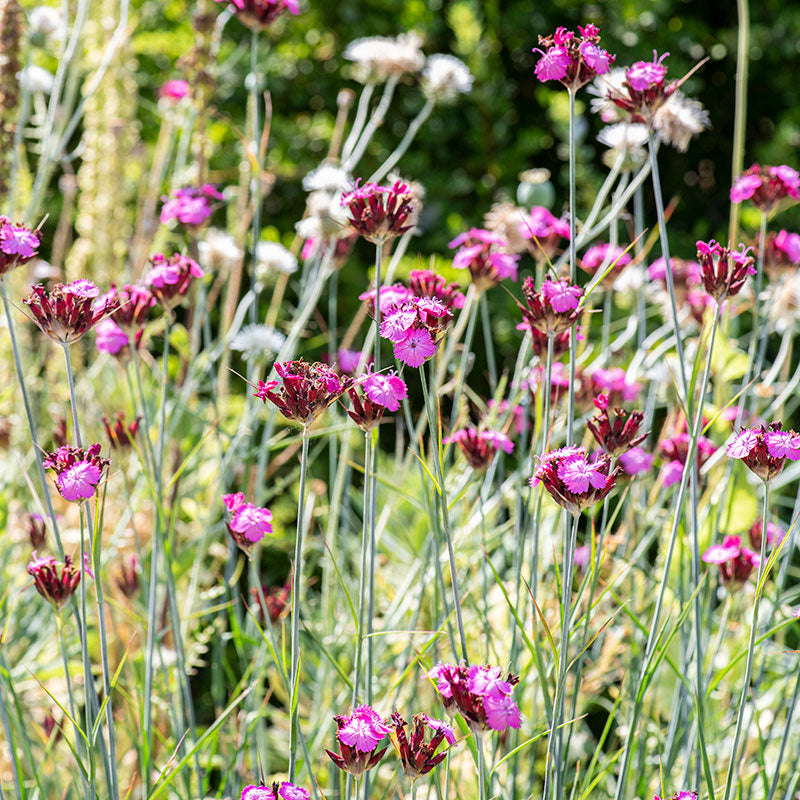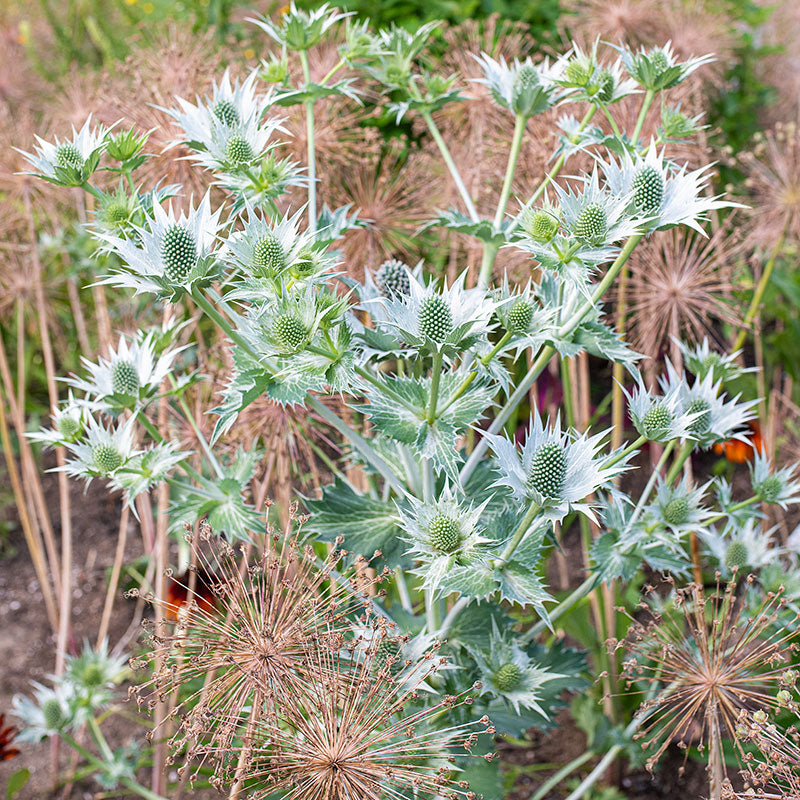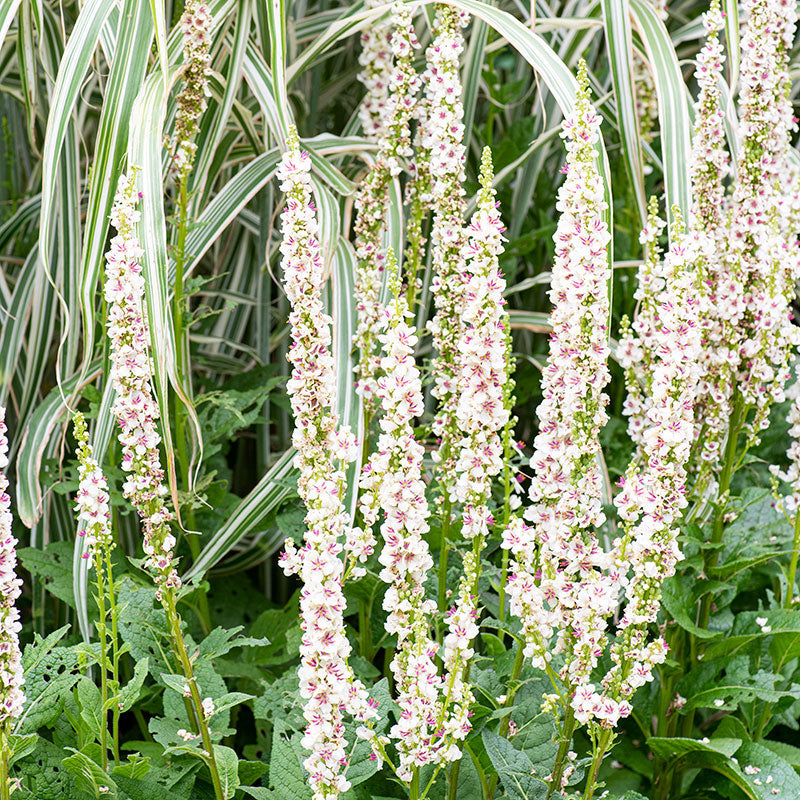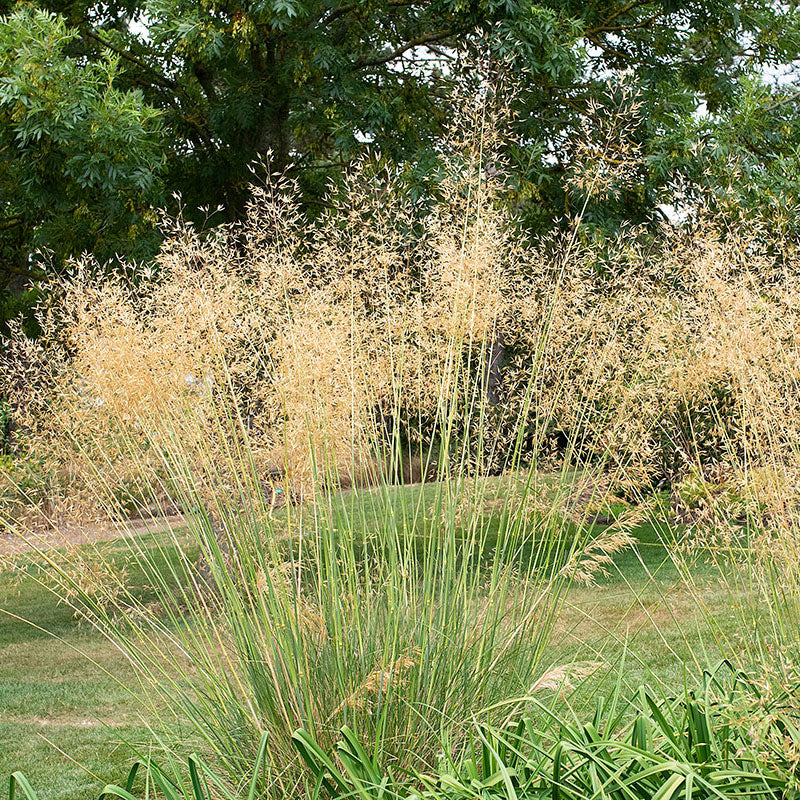Seed Packet
Carthusian Pink
Dianthus carthusianorum
Cluster head pink's origins as an ornamental is wreathed in the mists of time; it's said Carthusian monks from the 11th century favored it in their gardens, and I suspect it combined beauty with utility. Once overlooked but never forgotten, it is now a trendy plant, adding a memorable spark and an airy lightness to meadows and dry borders, lovely mixed with grasses and penstemons. Tall, wiry stems emerging from a tuft of low grass-like foliage hold clusters of brilliant magenta flowers at the tips.
SKU #S1648
Growing Companions






























